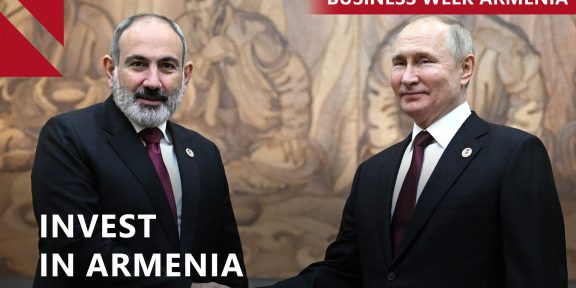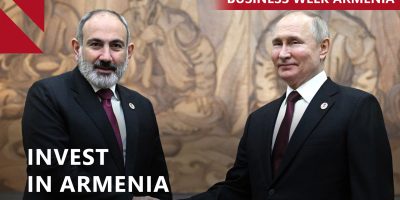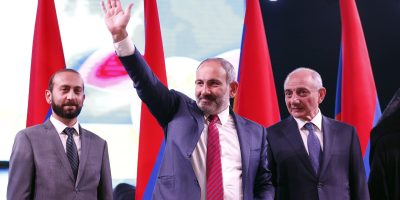By Benyamin Poghosyan, Chairman and Founder, Center for Political and Economic Strategic Studies
On December 4, 2019, Armenian and Azerbaijani foreign ministers held their last meeting for this year on the margins of the OSCE Ministerial Conference in Bratislava. According to Armenian and Azerbaijani sources, the current stage of negotiations, the necessity of ceasefire consolidation and the implementation of confidence-building measures were among the key topics of discussion. An agreement was reached to organize another meeting at the beginning of 2020. The Foreign Minister of Armenia highlighted the modest achievement reached within the framework of the agreement on preparing the populations for peace, through the implementation of an exchange program for media representatives’ from Armenia, Artsakh and Azerbaijan.
 Meanwhile, on December 3, Azerbaijan distributed among OSCE member states a Memorandum outlining the Azerbaijani position regarding the possible ways of settling the Nagorno-Karabakh conflict. The document once again emphasized that Azerbaijan will only accept a step by step approach and does not see any status for Nagorno Karabakh other than autonomy within Azerbaijan.
Meanwhile, on December 3, Azerbaijan distributed among OSCE member states a Memorandum outlining the Azerbaijani position regarding the possible ways of settling the Nagorno-Karabakh conflict. The document once again emphasized that Azerbaijan will only accept a step by step approach and does not see any status for Nagorno Karabakh other than autonomy within Azerbaijan.
This approach contradicts the basic tenets of the Madrid principles publicized by the Presidents of the OSCE Minsk Group co-chair states in July 2009 and is absolutely unacceptable for both Armenia and Nagorno Karabakh Republic. Meanwhile, especially after the April 2016 War the 2009 Madrid principles have been rejected by the public in Armenia and Karabakh.
Thus, we may argue that negotiations are in deadlock and most probably Azerbaijan is preparing for war. However, the Nagorno-Karabakh conflict settlement process as well as the decision to start large scale hostilities depends not only on Azerbaijan, Armenia and Nagorno Karabakh. The conflict, as all other conflicts in the world, is exploited by regional and global actors in order to further their own interests.
Currently the most influential player in the South Caucasus is Russia. Russia’s key goal is to strengthen its positions in the region simultaneously restricting the involvement of other players. Given the Armenia – Russia strategic alliance, which, due to geopolitical constraints, no authority in Armenia may challenge, the focal points for Russia are Azerbaijan and Georgia. In the case of Azerbaijan, Russia definitely would like to use the Nagorno-Karabakh conflict as a tool to pull Azerbaijan closer. It does not mean that Russia will abandon Armenia and sacrifice Yerevan’s interests ending the alliance. Moscow understands that Azerbaijan may be a strategic partner but can never substitute Armenia as a strategic ally.
The best option for Russia is to deliver something to Azerbaijan simultaneously assuring Yerevan that it is in its best interests to do so, thus keeping the Russian – Armenian alliance intact. Moscow may think that the withdrawal of Armenian forces from parts of the security zone through Russian mediation and the deployment of Russian peacekeepers along the new line of contact is a workable solution. The Russian peacekeepers will guarantee that Azerbaijan will never use its new positions to attack Karabakh thus providing security guarantees for territories remaining under the control of the Nagorno Karabakh Republic. The opening of infrastructure including, a Armenia – Iran railway via Nakhijevan and Armenia – Russia railway via Azerbaijan would boost the Armenian economy. Baku will receive some territories back without a shot fired and simultaneously the deployment of Russian peacekeepers will give Moscow a tangible leverage on Azerbaijan strategically increasing its influence over Baku.
The US and EU may welcome such a solution as their key concern is the prevention of hostilities and the unimpeded functioning of the Southern Gas corridor. The US is also interested in continued isolation of Iran. Tehran may complain but has no strategic resources to thwart this solution if Armenia, Azerbaijan and Nagorno Karabakh agree.
Meanwhile, this solution will strategically weaken Armenia’s position in the region finalizing the transformation of Armenia into a Russian client state as in this situation Armenian security will depend only on Moscow. Meanwhile, simply criticizing Moscow for moving closer to Azerbaijan and selling modern weaponry will not make Yerevan’s life easy. Moscow’s strategic goal is to increase its influence in the South Caucasus counting on Baku and Yerevan not to position themselves as an obstacle to that.
Armenia simply needs to clearly articulate its vision that any change of the Nagorno Karabakh Republic borders is absolutely unacceptable and any Russian action towards that direction will end the Armenia – Russia alliance. Through several channels (diplomatic, expert community, NGOs) Armenia may send messages to Moscow that it is not going to create obstacles to the Russian will to strengthen its position in the region, but that goal may be reached much easier through strong Armenia – Russia relations. Simultaneously, the end of the Armenia – Russia strategic alliance will complicate Moscow’s efforts. Of course, such a development will have dire implications for Armenia and the Nagorno Karabakh Republic, as it will make it much harder for them to counter joint Azerbaijan – Turkey pressure. However, Armenia’s trump card in such a negative scenario is its ability to complicate other ambitions and make life for all actors involved in the region much more problematic.
Thus, most probably the past as well as the upcoming rounds of negotiations will not bring any breakthrough in the Nagorno-Karabakh conflict negotiation process due to the absolutely incompatible positions of both sides. Meanwhile, Armenia should clarify its position on possible solution scenarios which some actors may try to impose and play its cards well to preserve the territorial integrity of the Nagorno Karabakh Republic.
















